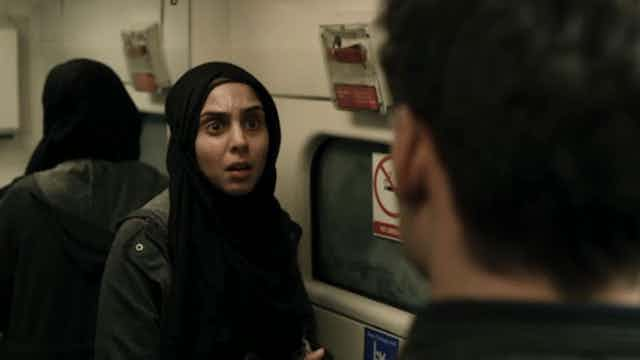In a speech to the UK’s House of Commons in March 2017, actor and rapper Riz Ahmed, a Muslim, delivered a message about the importance of diversity and representation in the media:
What people are looking for is a message that they belong. Every time you see yourself it’s a message that you matter, that you’re part of the national story.
But when it comes to the “national story”, the one about Muslims is pretty grim. The pressing issue of Islamophobia is both fuelled and defined by the misrepresentation and stereotyping of Muslims in the media. Instead of challenging the images of the “oppressed” Muslim woman, or the violent Middle Eastern man that propagate our media, mainstream films often reinforce them. But films are also platforms with the potential to create change through alternative narratives. Our visual culture can play a crucial role in the way we understand the world. So the question is, what do our visual platforms tell us about our cultural perceptions of Muslims? In other words, how are Muslims represented in our stories?
Read more: It's not just about race and gender – religious stereotypes need tackling too
With backgrounds in education research and tech respectively, Sadia Habib and Shaf Choudry have kickstarted a project that not only asks this question, but also strives to offer evidence-based answers. In an attempt to quantify the representation of Muslims, the duo has coined what they call the Riz Test. Inspired by the Bechdel test, (which challenges viewers to consider the way women are represented in whatever they happen to be watching) and Riz Ahmed’s speech, Habib and Choudry use five points to measure the depiction of Muslims in films and TV shows.
In their own words, the Riz Test: “is a project to measure the portrayal of Muslims in film and TV. What’s new is that we’re creating a data set that measures how poorly Muslims are represented.”
Any film with at least one identifiably Muslim character can be put to the test. The test asks, is the character:
Talking about, the victim of, or the perpetrator of terrorism?
Presented as irrationally angry?
Presented as superstitious, culturally backwards or anti-modern?
Presented as a threat to a Western way of life?
If the character is male, is he presented as misogynistic? or if female, is she presented as oppressed by her male counterparts?
If the answer to any of the above questions is yes, the film has failed the test.
What is shocking is that many critically acclaimed shows fail the test. When I interviewed the pair about the Riz Test recently Choudry told me that the recent BBC hit drama Bodyguard “failed all five criteria of the Riz Test within the first 12 minutes of its first episode”. Habib added that there “are serious consequences to these misrepresentations. Muslim women, especially those visibly marked by the hijab, are often targets of abuse and Islamophobia”.
Moving beyond stereotypes
Most Muslims will tell you that the images and tropes used in portraying the community mainly rely on lazy, racist and Islamophobic stereotypes. The films that fail the Riz Test reproduce such images and, by drawing attention to these misrepresentations and moving towards something concrete and quantifiable, the test smashes any assumptions that Islamophobia in media is merely a myth.
We must demand better from our media. One way to counter this is to invite an alternative way of thinking and to challenge the discourse and culture around Muslims and their representations.
So how do we demand better representation? With its growing data set, the Riz Test is a great way of drawing attention to the problem – presenting the movie makers with evidence is a great first step that can challenge the film industry at large.
Not only do we need to diversify the roles in our current film industry, but we also need to diversify the kinds of films we watch. World cinema, I think can offer a much more complex depiction of “other” places and people - one that challenges the power dynamics at play and introduces the idea of self-representation, agency and voice.

While a good film won’t solve all our problems, it can bridge gaps by bringing a diverse audience into the same space. Prominent Iranian filmmaker Asghar Farhadi won Iran its first academy award for A Separation in 2012 (he won another in 2017 for The Salesman. At a time of political chaos and isolation, Farhadi has familiarised the world with his home country through its art and human stories.
In her book Reel to Real, Sex and Class at the Movies, feminist thinker and activist bell hooks argues that films “make culture”. The visual medium is strong – and representation matters. By putting pressure on the kinds of images we’re exposed to, and the kind of images we reproduce, we can indeed “make culture”, or perhaps, at this point, fix aspects of our culture so that our “national story” doesn’t take representation for granted.

